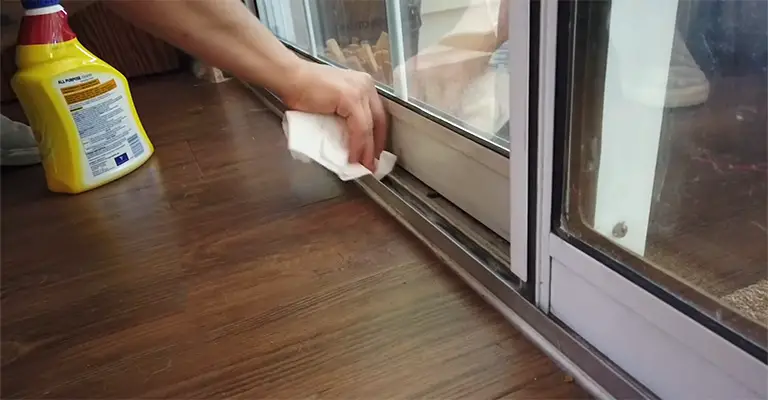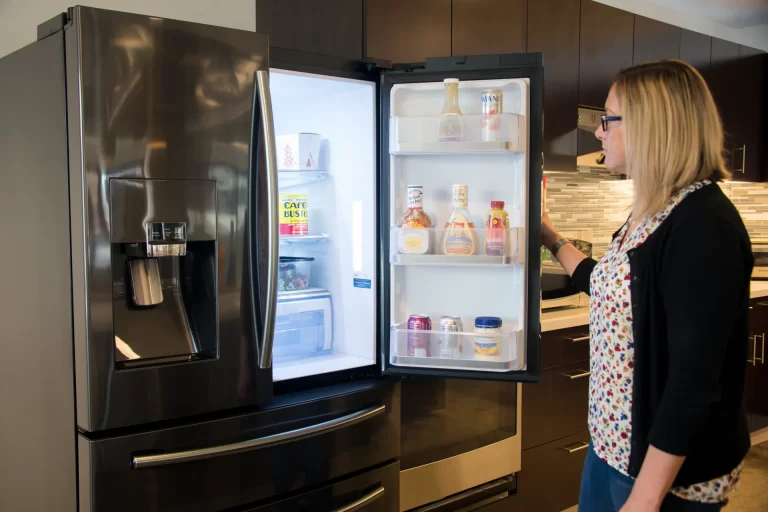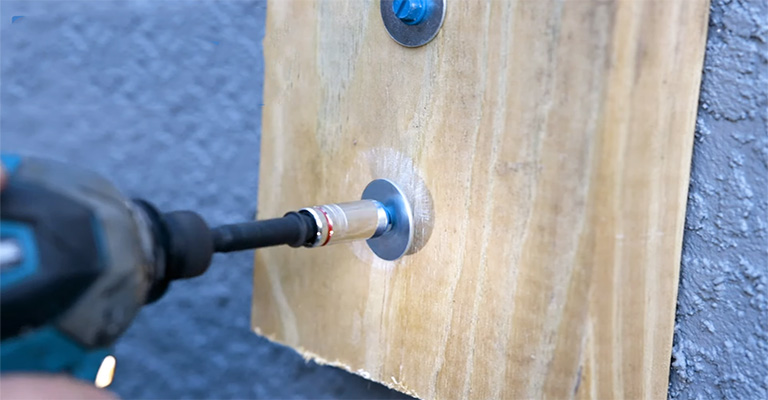Door Latch Won’t Retract All the Way | Causes and Fixes
There might be a day where your door latch will not retract all the way. To fix that problem, troubleshoot whether it’s the strike plate, jamming, or broken issue. After determining the steps, call a professional or collect the materials per fixing idea and finish fixing.
For better results, you can use lubricates but not every type of lubricating is suitable. There are wet lubricates that will only worsen the situation. However, some prefer using car wax to seal any kind of hole in the door latch.
What Causes a Door Latch to Stick
There are many reasons that a door latch becomes unable to retract but you should first troubleshoot the issue to see what the symptoms are that are causing it not to retract. As mentioned, there are three major problems as to why this problem create at your door.
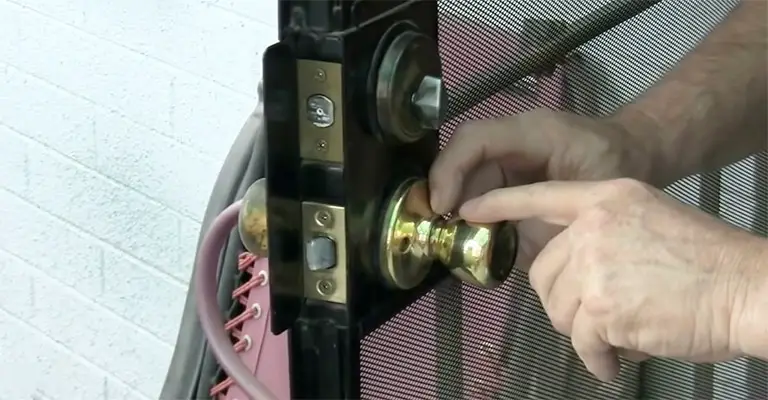
Misaligned strike plate
The latch is stuck and is not retracting at all, then this might point that the strike plate being misaligned. This may occur when you tried to retract the latch into the hole of the strike plate. This means, while closing the door this may happen, and might want to check the problem out.
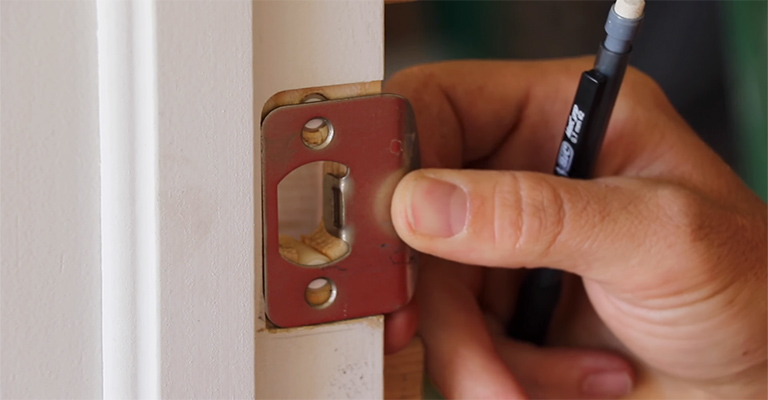
Here the reason can be the wrong position of the strike plate because of the wrong installation. The metal latch is not falling into the hole perfectly and causing this headache. There is another possibility of this cause is to due to moisture causing your door wood to inflate or the foundation of the home is not stable.
Jammed latch
When the handle is turned and putting physical pressure is put on the latch, you will find the lock is jammed. It has nothing to do with control of the doorknob. Moreover, this happens because it involves an excess of material and thus the spring tensioning is obstructed.
Moisture easily builds rust around the latch bolt and lock. For this, it creates accumulated rust and your door latch does not retract. Soon this will create jam in the internal system because of the extra material that got in the way. The metal pieces try to slide past each other, as a result, it can cause unnecessary friction.
Broken internal mechanism
In this part, the sign about the cracked lock is clear. When you try out the handle and the latch is stubborn to retract or stuck, then this means the lock is broken. There is a various reason behind a broken mechanism that causes a stuck lock. There might be a problem with the spindle or might be a broken piece in the lock.
Meaning the actuating handle is unable to send any information to the latch. There could also be something wrong with the spindle hole, keyed cylinder, or something that has broken in the lock. But it is okay to press on the latch, in this way it will slide in and out the way as it is intended.
Fix the problem
For now, you have experienced different scenarios and should have a better insight into what may be the problem with the lock. You can now use your observations to decide on the next step.
Here are some of the possible fixes for the above issues you are experiencing. You can seek to do fixing by yourself or with the help of a professional.
Misaligned strike plate
You have a problem, the door latch doesn’t reach the strike plate. So, adjust the strike plate to align with the structure of the latch. Find the door frame where the latch lands and after this, you need to remove the strike plate and re-install it properly. You can also widen the hole.
If it is wood expansion, then you will need a permanent solution like redoing the door finish to help prevent moisture. You can repair, reform the foundation but again, you can get a professional to analyze these problems at the spot.
Jammed latch
Take everything apart, remove those unnecessary materials at the beginning of the step. Now, get a bucket of vinegar of about 5% acidity and drop these mechanisms. Let them sit so that you can separate dirt and grime from the metal. It is something that affects all locks given enough time, but after about a day of sitting, you can do the cleaning part.
Make sure after you clean the lock with a tiny brush and scrub the parts well enough then polish the lock in a way that you do not have reoccurring rust problems. However, if there are any imperfections, then you can easily seal them with car wax. Anyway, remove the excess polish before ruining the door latch.
Broken internal mechanism
For this problem, there is only one solution and that is to change the lock. But, for a cheap solution, you can call a blacksmith to replace some of the damaged parts.
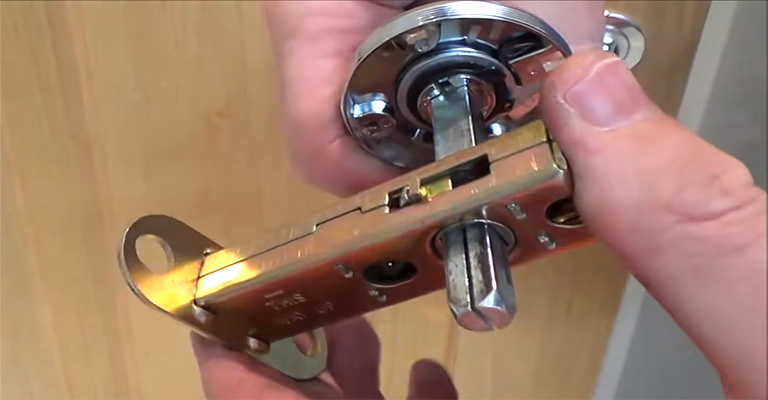
This way it will cost more but this could be a perfect opportunity to upgrade your security system. Now you know how to deal with the problem and take the necessary steps to get them back into working order.
FAQs
1. Is it possible to spray WD40 in the door lock?
Answer: Graphite-based lubricate is used for lock applications. So, we do not recommend any oil-based lubricants like WD40 in the door lock. Because there is a possibility of gumming up the lock internals over time by the oil-based lubricate.
2. What can be used as a spray-on frozen lock?
Answer: it is a pointless attempt to use boiling water on a frozen lock. So, try using isopropyl alcohol on them but you might not find this locally. In this matter, you can use hand sanitizer instead of alcohol. This method is a permanent solution for this kind of lock.
Troubleshooting Stuck Door Latches
When dealing with a stuck door latch that won’t fully retract, it’s essential to understand the common culprits behind this frustrating issue. Often, a door latch sticking can be traced back to misalignments between the latch mechanism and the strike plate hole. This misalignment prevents the latch from smoothly sliding into and out of the strike hole plate, causing the door latches to become sticky and resist full retraction.
Additionally, debris or wear within the latch mechanism itself can exacerbate the problem, leading to a closed door that refuses to open easily. Addressing these issues typically involves adjusting the position of the strike plate, ensuring the strike plate hole is clear of obstructions, and lubricating the latch mechanism to combat the sticky latch problem. By taking these steps, homeowners can effectively resolve issues related to door latch sticking and ensure their door functions properly.
Final Considerations
Whenever you face a problem like when your door latch won’t retract all the way, you can now get them back into working order. It is your choice to do the work yourself or as a professional.
Whether the problem lies in a broken internal mechanism, jammed latch, or uneven strike plate, you can easily fix it by doing it yourself. So, take the time and solve the issue fluently.

